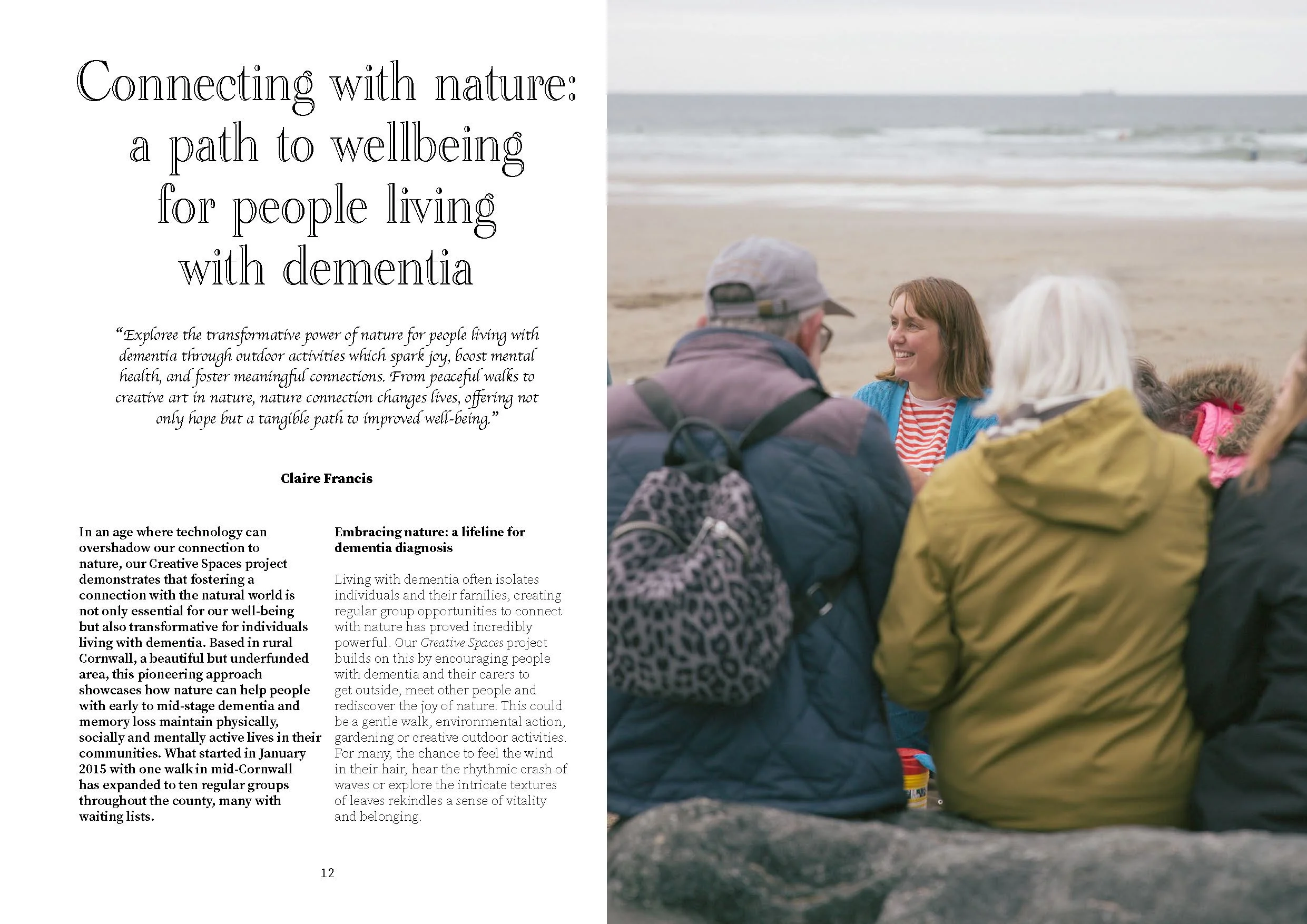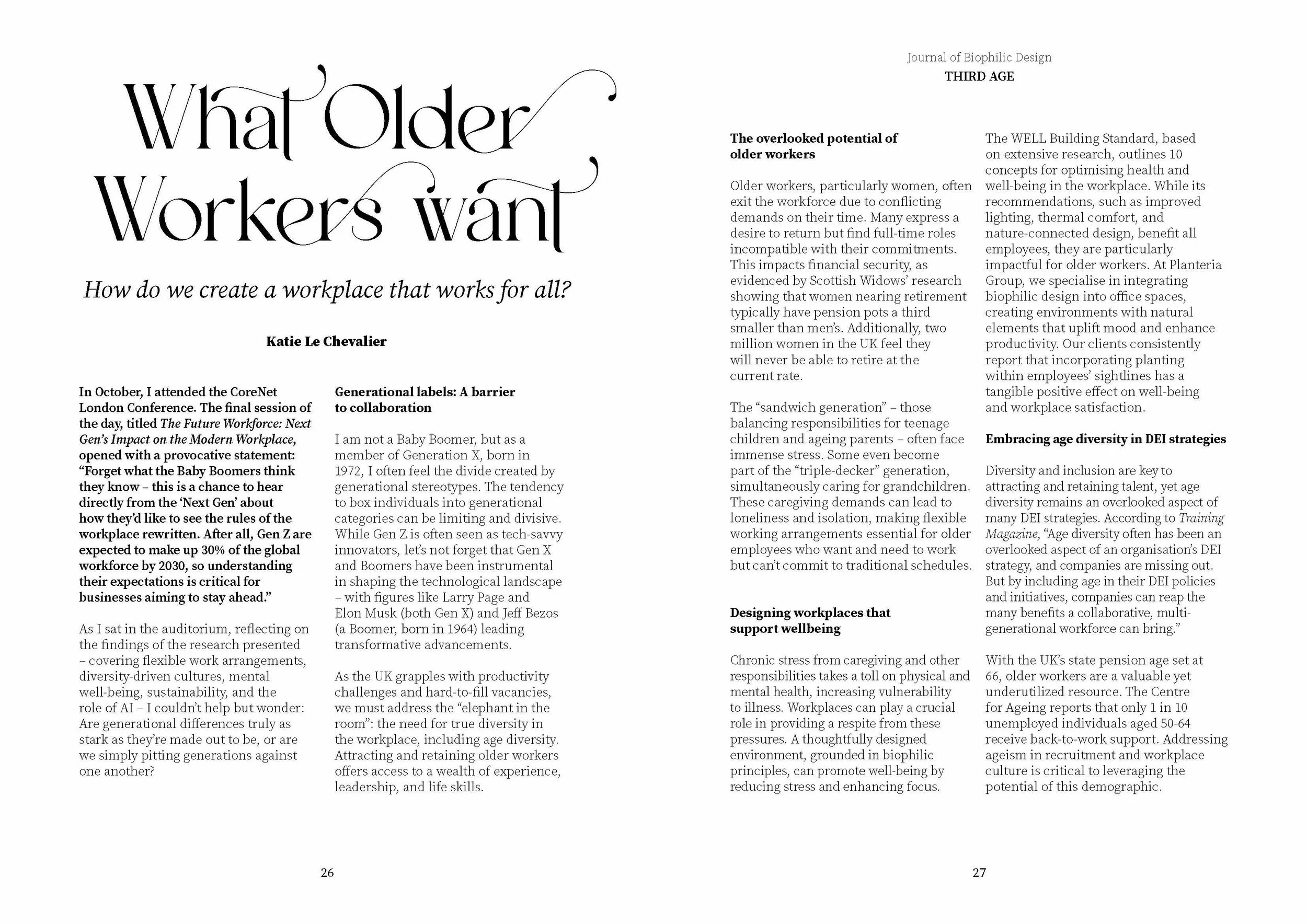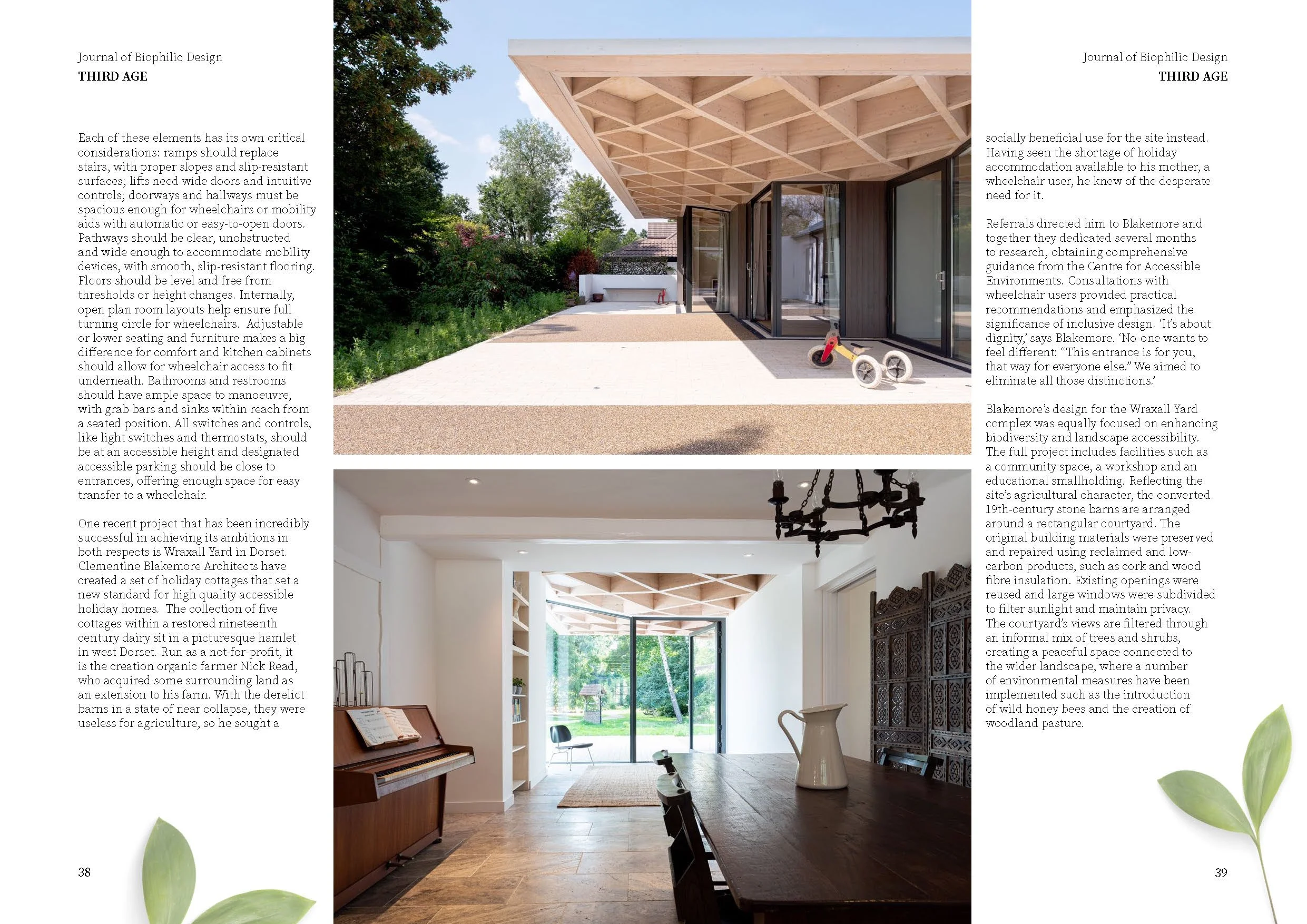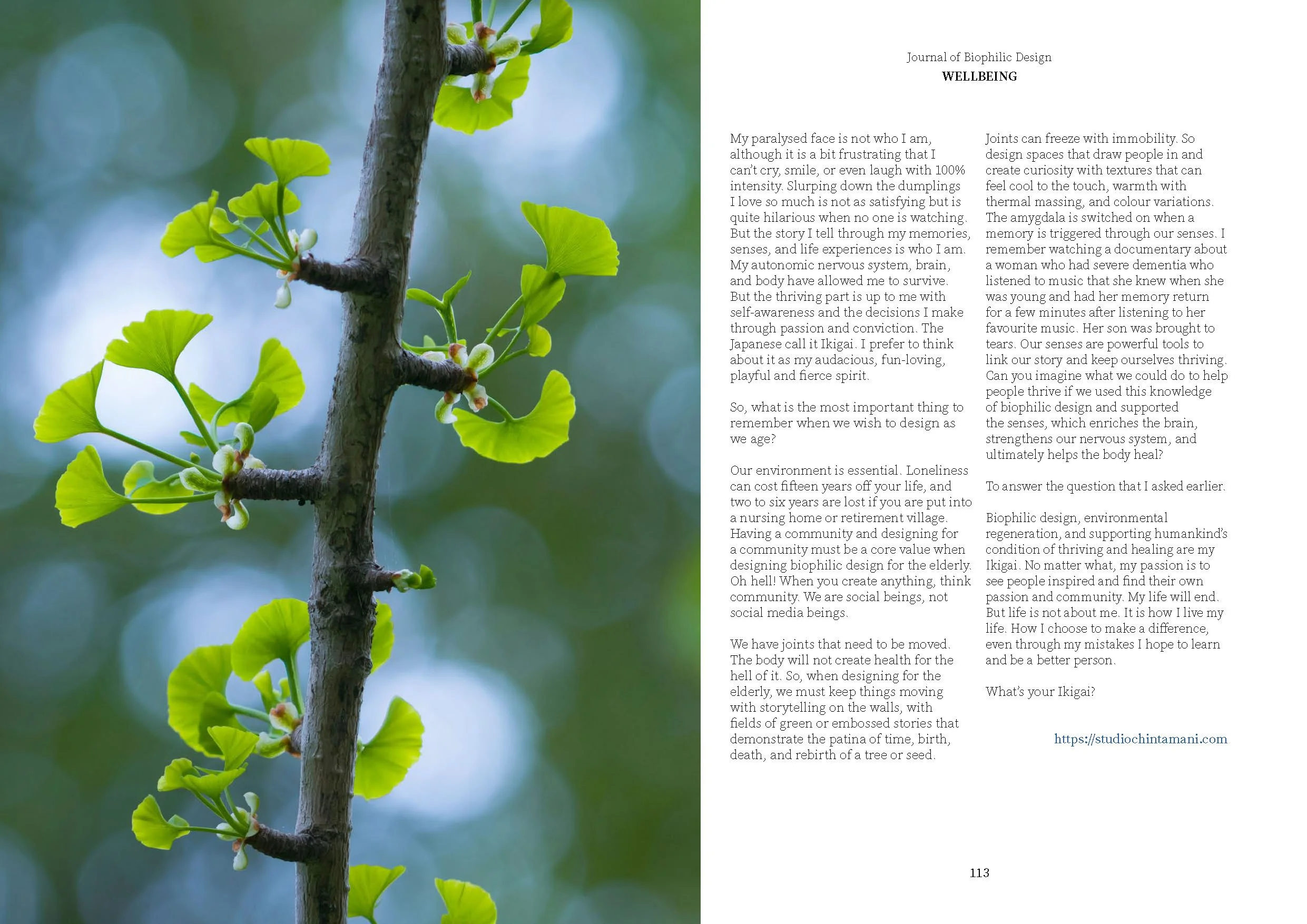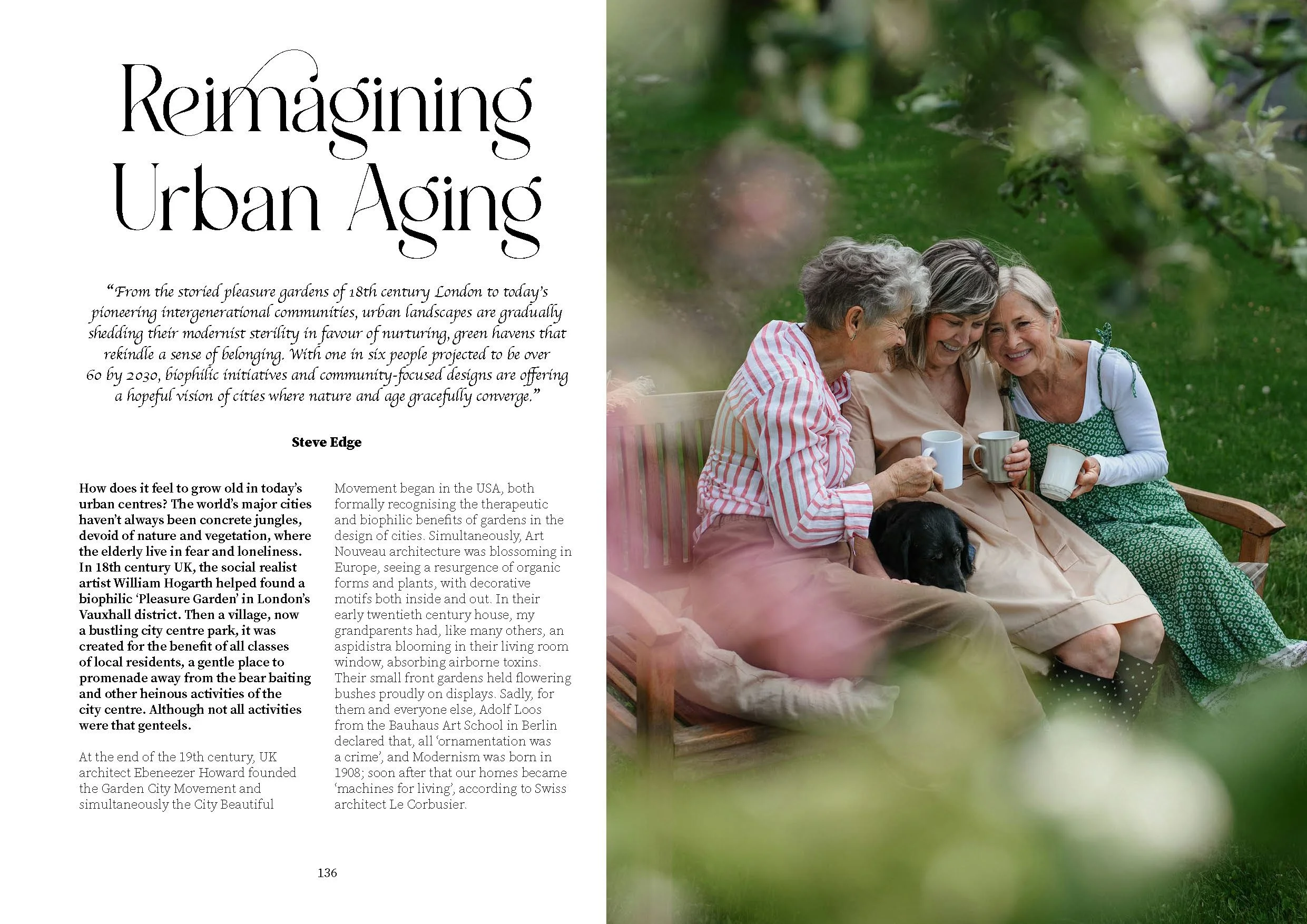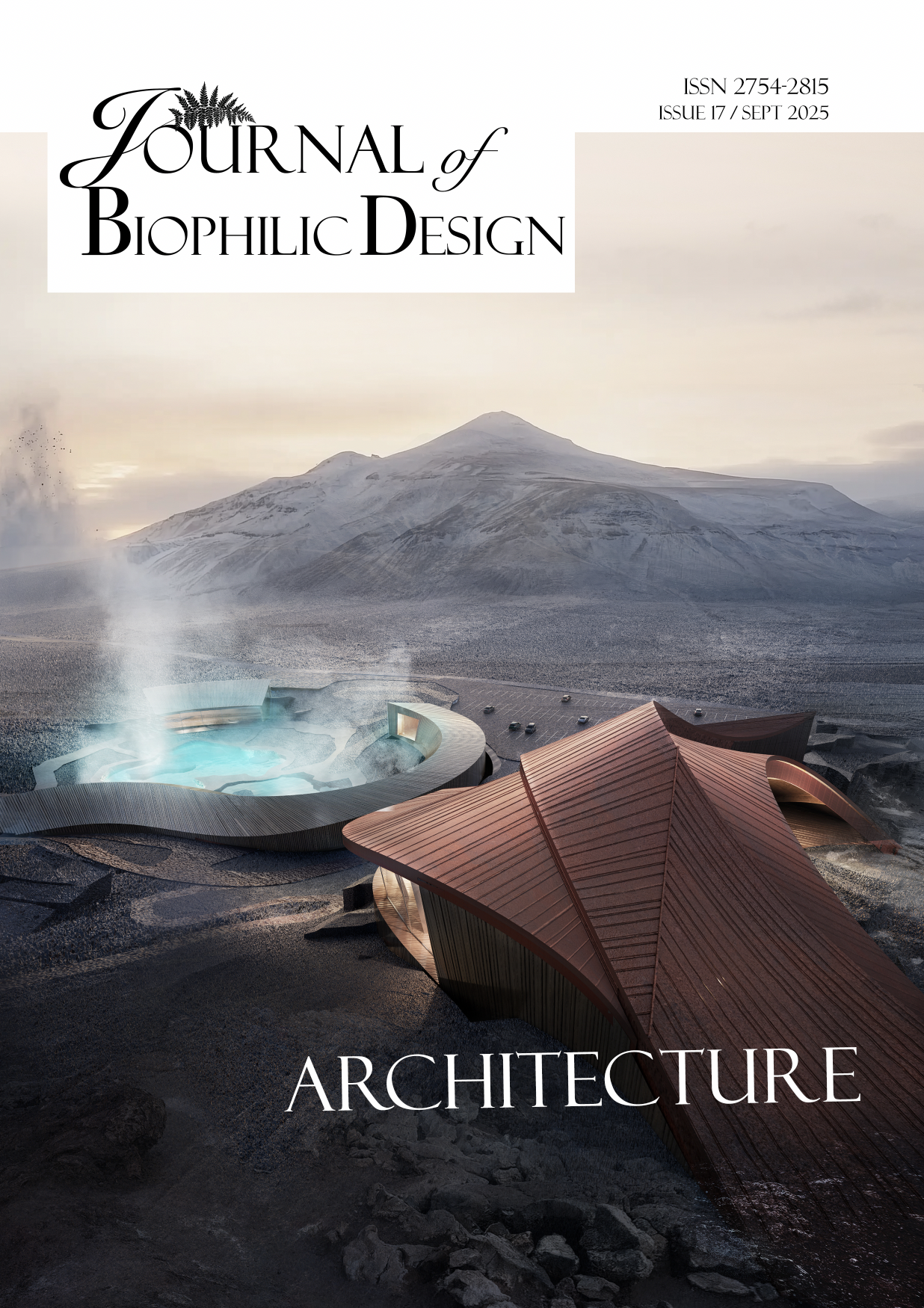Journal of Biophilic Design - Issue 14 - Third Age - Ebook Version
Journal of Biophilic Design - Issue 14 - Third Age - Ebook Version
Welcome to the 14th Issue of the Journal of Biophilic Design. This issue looks at concepts for Biophilic interiors in senior environments, who connecting with nature supports people with dementia, how greener living is redefining renting for older residents. We also look at what older workers want, how we can fust nature and accessibility in modern architecture and create inclusive, biophilic and supportive spaces for an ageing population.
With our population living longer, we want to be healthier longer, and also “retire” (whatever that may look like) in nicer more inspiring places. I don’t think any of us would choose to spend our last days, months or years in how many retirement homes or care homes look like. White boxes, with hard surfaces, wipe clean PVC and lino. Rather we would a spa like environment to ease our days out.
Why can’t we have this? I hate to simplify it, but it needs to be called out. It’s a case of specifying differently, with sense, compassion and also with grace
People are not just numbers. Just because we get to a certain age, we forget that some of us were rockers in the 70s or hippies in the 60s. To put us into white boxes like prisoners or chickens in a coop is to negate the spirit and LIFE that we have had.
Biophilic Design reconnects us to all LIFE, and it is needed more than anything in older living accommodation, care homes, hospitals and urban design. There is so much evidence which shows how nature connection, especially direct connection with plants, trees, natural light and natural materials, enhances our wellbeing when we are older or when we are sick. Recovery rates are faster, dementia sufferers have an improved experience, and even air quality is better for those whose respiratory passages might not be as good as they once were.
The same goes for sound, nature doesn’t have walls, so acoustics in natural environments are better. Softer furnishings using natural materials, windows with views to the gardens or green spaces, being able to experience the sun rise and sun set, watch wildlife that is full of biodiversity from the window fills us with joy, uplifts our spirits and we know helps heal us.
Thankfully there is an increasing number of designers, architects and urban planners who are embracing Biophilic Design and bringing it into the homes, hospitals and cities for us all to flourish in.
Did you know you can subscribe and become a member of the Journal and get access to all back issues of the Journal too? https://journalofbiophilicdesign.com/subscribe-as-a-member


